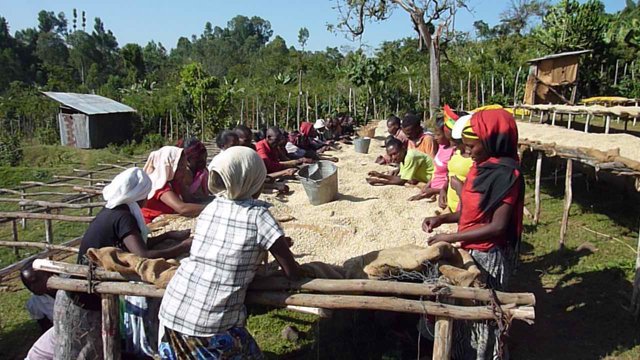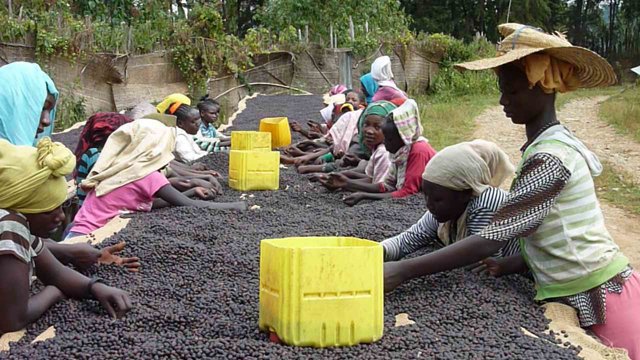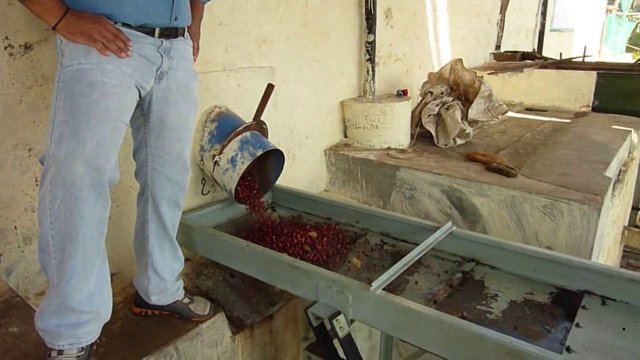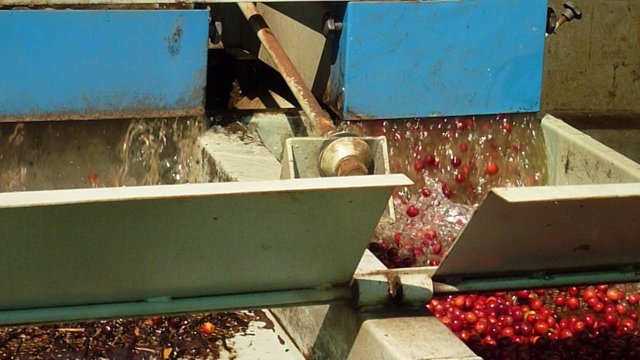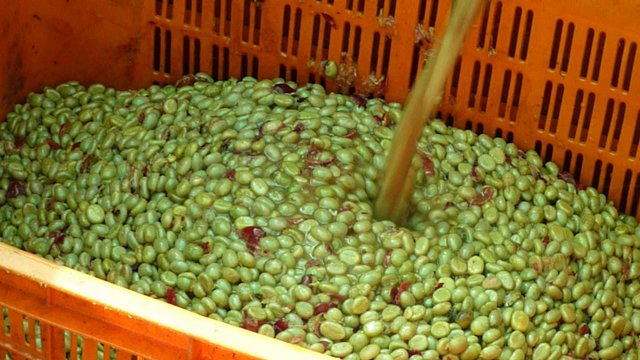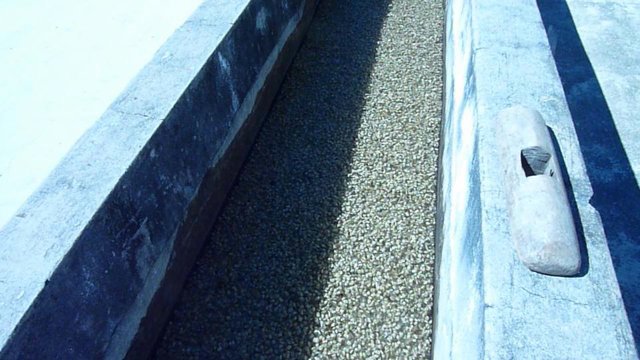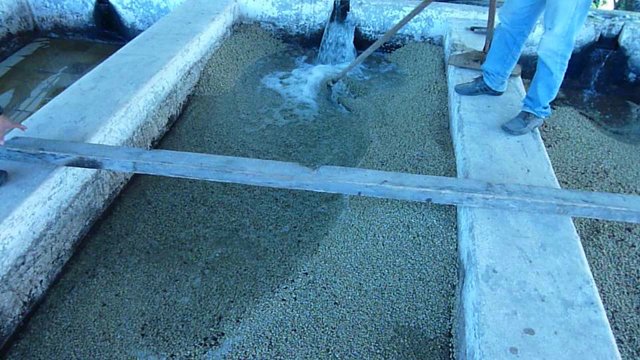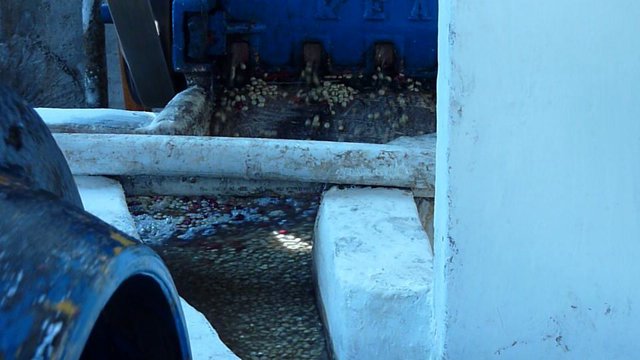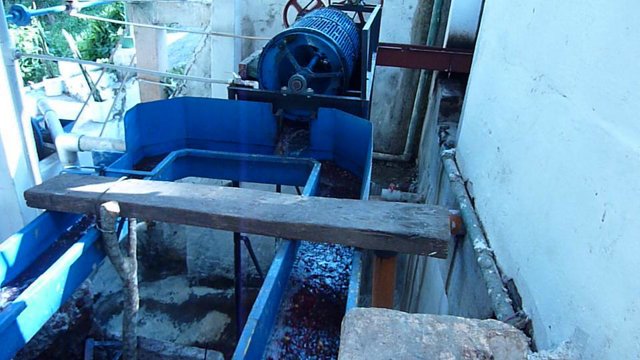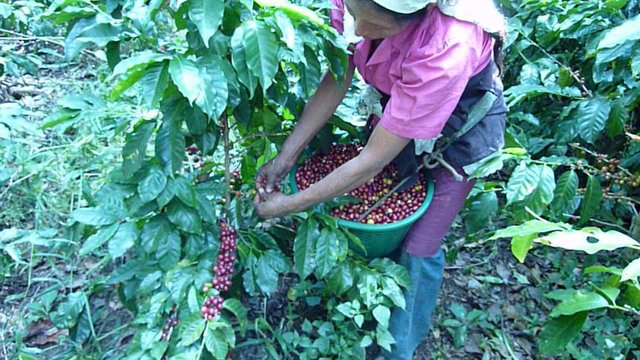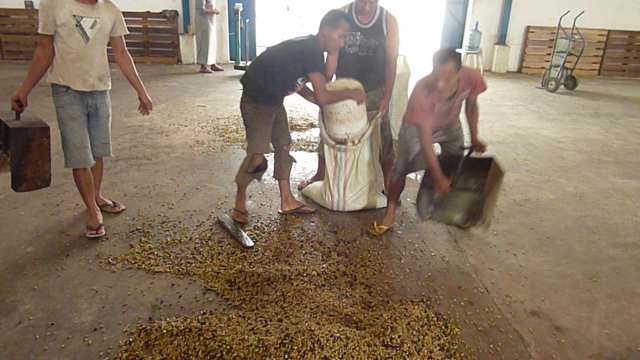Videos
In the washed coffee process (in very basic terms) the coffee cherry is brought to the wet mill where it is then pulped (outermost fruit skin is removed). The coffee is then fermented (fruit mucilage layer broken down), washed to remove the remaining fruit, and then dried on a patio, raised screen bed as see here.
Natural processed coffee (in very basic terms) is the original method used for coffee that consists of more hand labor than machinery. The coffee cherries are picked and then directly dried under the sun on patios or raised beds as seen here. Natural processed coffees tend to have more body and lower (bright) acidity than their washed counterparts.
This very clever machine is use to separate out the good cherries from the bad or not so good as well as any foreign matter before fermention.
This very clever machine is use to separate out the good cherries from the bad or not so good as well as any foreign matter before fermention.
Coffee freshly pulped with its mucilage for fermentation. Fermentation must be closely monitored in terms of time which depends on temperature, relative humidity and the amount of pectin and bacteria in the water. Water rich in bacteria and pectin reduces the fermentation time. If the temperatures are too low, fermentation takes more time. Over or under fermentation will affect cup quality.
In these channels coffee beans experience generally a fourth separation process in the wet mill process. In this stage, coffee beans flow in water at a slight inclination which allows low-density coffee beans (floaters) to roll over high-density coffee beans and be deposited in the last couple of meters of the channel, these low-quality coffee beans which are processed separately.
The end of fermentation is assessed by feel, as parchment surrounding the beans loses its slimy texture. When the fermentation is complete, the coffee is thoroughly washed with clean water in tanks and push out into the seperation channel.
In machine-assisted wet processing, fermentation is not used to separate the bean from the remainder of the pulp; rather, this is done through mechanical scrubbing. Removing mucilage by machine is easier and more predictable than removing it by fermenting and washing.
In machine-assisted wet processing, fermentation is not used to separate the bean from the remainder of the pulp; rather, this is done through mechanical scrubbing. Removing mucilage by machine is easier and more predictable than removing it by fermenting and washing.
A coffee mill can do very little to improve the quality of coffee coming from the field, but it must maintain the quality of selectively picked coffee. Only the ripe cherries are harvested processed and they are picked individually by hand. Pickers (in general) rotate among the trees every 8 – 10 days, choosing only the cherries which are at the peak of ripeness.
Semi washed coffee delivered to a central drying mill being measured into units for payment here the outer skin from the cherry has been removed using machines, still with their mucilage attached - are then stored in bags, following this period, the mucilage is then washed off before the beans are dried.

